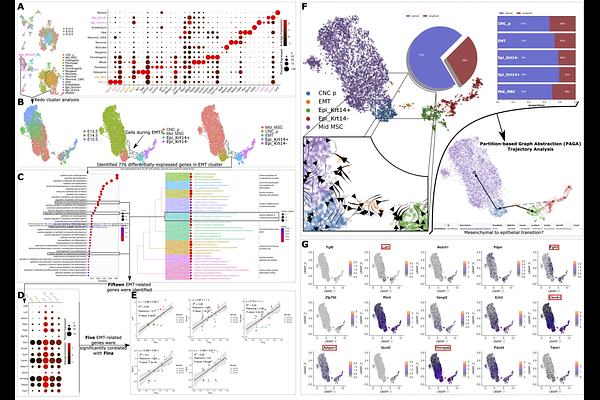Filamin A mediates embryonical palatal fusion by linking mechanotransduction with β-Catenin/Smad2

Filamin A mediates embryonical palatal fusion by linking mechanotransduction with β-Catenin/Smad2
Wang, Z.; Hayano, S.; Weng, Y.; Mu, X.; Ono, M.; Pina, J. O.; D'Souza, R. N.; Yamashiro, T.; Oohashi, T.; Kamioka, H.
AbstractTo decipher potential mechanisms underlying cleft palate (CP), we used advanced bioinformatic integrated with literature mining and genome-wide association study (GWAS). Re-analysis of RNA-seq data (GSE45568, GSE185279) combined with literature mining highlighted the roles of Filamin A (Flna) and Epithelial-Mesenchymal Transition (EMT) in palatal development. Immunofluorescence of in vivo palatal shelves showed increased Flna in medial edge epithelial (MEE) cells and EMT cells located in an epithelial triangle. Inhibition of TGF-{beta} or RhoA and mechanical stimuli impacted Flna expression in ex vivo cultured palatal shelves. Re-analysis of scRNA-seq data (GSE155928) highlighted a correlation between Flna and Ctnnb1 in EMT cells. Flna knockdown affected {beta}-catenin/Smad2 expression in cultured palatal shelves and HaCaT cells. Epithelium-specific knockout of Flna delayed palatal fusion in female mice but not males. Mendelian randomization analysis suggested that parental habitual physical activity (HPA) was causally associated with lower risk of CP in their offspring. Together, these findings suggested that parental HPA could benefit their offspring\'s palatal development through Flna by linking mechanotransduction with the Wnt/TGF-{beta}/Smad signaling pathways during palatal fusion.